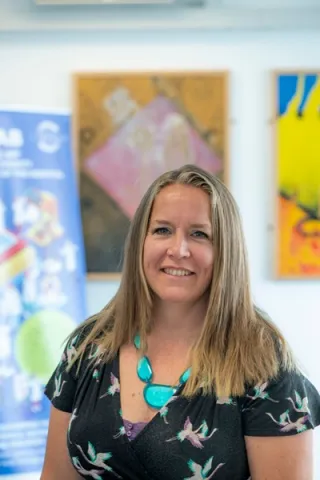Project overview
We know that the LifeLab experience can motivate teenagers to change their behaviours, but further tailored support is needed once they leave LifeLab and return to their schools, communities and families. Inspired by Pokémon Go, Snapchat, and fitness apps, we felt that a game approach would be ideal for engaging teenagers. Critical to the project’s success would be input from the teenagers themselves into the design of the game, which is where this seed-funded project came in.
Approach taken
We held a series of ‘idea jams’ in which teenagers could contribute their thoughts and ideas at different stages during the development process. This enabled the teenage voice to be heard and also allowed them to engage directly with research which has implications for their futures.
We held six successful ‘idea jams’ in a variety of locations (at LifeLab, local leisure centres and a local school) with a varied audience (totalling 79 participants drawn from the general school population, general public, plus direct invitations). The jams were used to elicit multiple types of user feedback. Initially, the students were asked to design characters that represent (1) who they are now and (2) who they would like to be in the future. These drawings and descriptions were analysed to help the game designers understand the target audience for the game and, in particular, to inform the creation of user ‘personas’.
Subsequent idea jams collected feedback on ideas for content within the final game.
The teenagers first played a prototype, then after giving feedback, designed variations on the stories and actions in the game. These themes and story ideas were subsequently used to generate further game content to engage and entertain the users.
The game jams were also used to test the feasibility of incorporating GPS-based elements into a game. The game design team ‘placed’ a series of objects which the students had to answer clues about and use GPS tracking to locate. This was very useful as several features were identified as being critical, a key example being the ability to safely ‘place’ objects.
We held six themed idea jams which generated outputs specific to the particular themes:
• Creating a series of personas
• User-data for a GPS based mobile game
• Input as to what elements of a game are appealing to teenagers
The opportunity for the teenagers to have their ideas and thoughts heard and translated into the final game was the driving force behind the jams. The richness of data generated for the personas and input into the game design has been invaluable and has directly influenced the game design and artwork.
This approach was a very new experience for the LifeLab team, enabling close collaboration between researchers, teachers and the game design team. The output – the game - is very different to anything we have produced before and we are excited to pilot its use.
This work was part of a larger project funded by the NIHR and demonstrated real value for money. The complementary PER Development Funding was crucial in enabling the voice of the end-user to be heard throughout development of the game, which would not otherwise have happened.
Approach taken
We held a series of ‘idea jams’ in which teenagers could contribute their thoughts and ideas at different stages during the development process. This enabled the teenage voice to be heard and also allowed them to engage directly with research which has implications for their futures.
We held six successful ‘idea jams’ in a variety of locations (at LifeLab, local leisure centres and a local school) with a varied audience (totalling 79 participants drawn from the general school population, general public, plus direct invitations). The jams were used to elicit multiple types of user feedback. Initially, the students were asked to design characters that represent (1) who they are now and (2) who they would like to be in the future. These drawings and descriptions were analysed to help the game designers understand the target audience for the game and, in particular, to inform the creation of user ‘personas’.
Subsequent idea jams collected feedback on ideas for content within the final game.
The teenagers first played a prototype, then after giving feedback, designed variations on the stories and actions in the game. These themes and story ideas were subsequently used to generate further game content to engage and entertain the users.
The game jams were also used to test the feasibility of incorporating GPS-based elements into a game. The game design team ‘placed’ a series of objects which the students had to answer clues about and use GPS tracking to locate. This was very useful as several features were identified as being critical, a key example being the ability to safely ‘place’ objects.
We held six themed idea jams which generated outputs specific to the particular themes:
• Creating a series of personas
• User-data for a GPS based mobile game
• Input as to what elements of a game are appealing to teenagers
The opportunity for the teenagers to have their ideas and thoughts heard and translated into the final game was the driving force behind the jams. The richness of data generated for the personas and input into the game design has been invaluable and has directly influenced the game design and artwork.
This approach was a very new experience for the LifeLab team, enabling close collaboration between researchers, teachers and the game design team. The output – the game - is very different to anything we have produced before and we are excited to pilot its use.
This work was part of a larger project funded by the NIHR and demonstrated real value for money. The complementary PER Development Funding was crucial in enabling the voice of the end-user to be heard throughout development of the game, which would not otherwise have happened.

